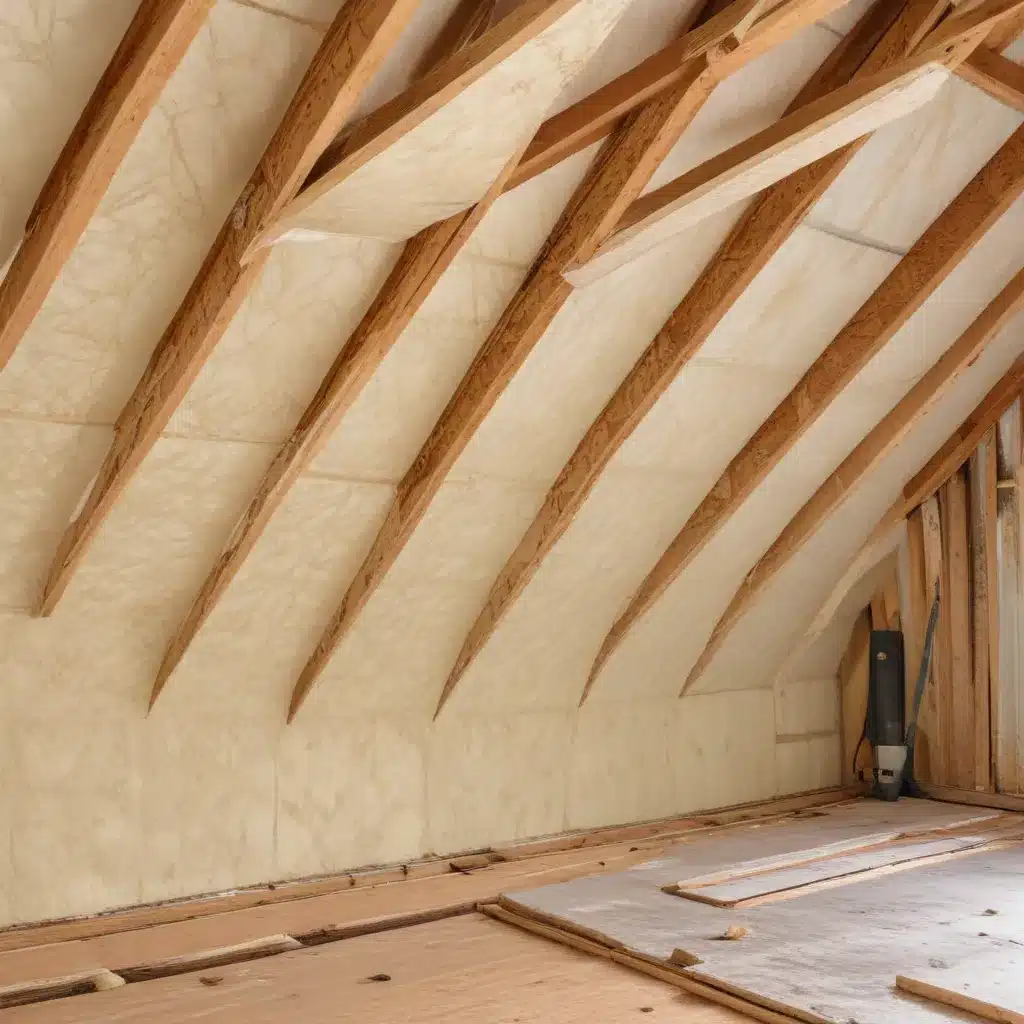
Sustainable Insulation Upgrades: Maximizing Energy Efficiency
As electricity prices continue to rise and environmental concerns grow, maximizing energy efficiency in our homes has become a top priority. Among the most impactful strategies are optimizing roofing and insulation – two crucial components that regulate indoor temperature, minimize energy consumption, and reduce environmental impact.
Energy Savings and Cost Reduction
Investing in high-quality insulation can significantly reduce energy costs. Proper insulation helps regulate indoor temperatures, preventing heat loss in the winter and heat gain in the summer. This, in turn, lessens the workload on your heating, ventilation, and air conditioning (HVAC) system, leading to lower utility bills. In fact, the U.S. Department of Energy reports that windows can be responsible for up to 25% of your heating bill, while a well-insulated attic can save up to 50% on energy costs.
Environmental Impact and Carbon Footprint
Beyond the financial benefits, sustainable insulation upgrades also play a crucial role in reducing your home’s environmental footprint. By minimizing energy consumption, you directly lower greenhouse gas emissions and your overall carbon footprint. This aligns with the growing demand for eco-friendly home improvements that contribute to a healthier planet. Furthermore, opting for recycled or renewable insulation materials can further enhance the sustainability of your project.
Improved Comfort and Indoor Air Quality
Effective insulation not only saves energy but also enhances indoor comfort and air quality. By preventing drafts and temperature fluctuations, insulation helps maintain a more consistent and comfortable living environment. This can lead to improved health and well-being for you and your family, particularly for those with sensitivities to extreme temperatures or poor air circulation.
Types of Sustainable Insulation Materials
When it comes to sustainable insulation, homeowners have a variety of eco-friendly options to choose from, each with its own unique benefits.
Natural Insulation Options
Natural insulation materials, such as cotton, wool, hemp, and cellulose, offer excellent thermal performance while utilizing renewable, biodegradable resources. These materials are often treated with borates or other fire-resistant additives to meet safety standards.
Recycled and Renewable Insulation
Recycled insulation, made from materials like recycled denim, recycled plastic bottles, or recycled newspaper, provides a sustainable alternative to traditional fiberglass insulation. These products divert waste from landfills while maintaining impressive thermal and acoustic properties.
Advanced Insulation Technologies
Newer insulation technologies, such as spray foam and vacuum insulated panels, offer superior R-values (a measure of thermal resistance) and can effectively seal air leaks, enhancing overall energy efficiency. These innovative materials often have a lower environmental impact compared to conventional insulation.
Assessing Your Home’s Insulation Needs
Before embarking on your sustainable insulation upgrade, it’s crucial to assess your home’s existing insulation levels and identify areas that require the most attention.
Identifying Existing Insulation Levels
Conduct an audit to determine the current insulation levels in your home. This may involve visual inspections, measuring R-values, or hiring an energy auditor to perform a comprehensive assessment. Understanding your starting point will help you prioritize the most impactful upgrades.
Evaluating Insulation Performance
Consider factors like the age and condition of your home, local climate, and energy efficiency goals to evaluate the effectiveness of your current insulation. Older homes may have inadequate or degraded insulation, while newer homes may benefit from upgrading to the latest high-performance materials.
Prioritizing Insulation Upgrades
Based on your assessment, create a plan to tackle the most critical insulation improvements first, such as sealing air leaks, adding attic insulation, or upgrading insulation in exterior walls. This strategic approach will maximize the immediate energy savings and ensure your home’s long-term efficiency.
Implementing Sustainable Insulation Upgrades
Whether you choose to tackle the project yourself or enlist the help of professionals, planning and budgeting are essential for a successful sustainable insulation upgrade.
Planning and Budgeting for Upgrades
Develop a detailed project plan that considers the scope of work, material costs, labor expenses, and any potential rebates or incentives available. Careful planning will help you navigate the process effectively and avoid unexpected challenges.
DIY Insulation Installation Techniques
For handy homeowners, DIY insulation installation can be a cost-effective option. Carefully research the proper techniques for your specific insulation materials and home construction, and take necessary safety precautions, such as wearing protective gear.
Professional Insulation Retrofit Services
If you prefer a more comprehensive approach or your home requires specialized expertise, consider hiring a professional insulation contractor. They can assess your needs, provide tailored recommendations, and ensure the proper installation of sustainable insulation solutions.
Maximizing Energy Efficiency with Insulation
Integrating your insulation upgrades with other energy-efficient measures can amplify the benefits and help you achieve optimal performance in your home.
Integrating Insulation with Other Efficiency Measures
Coordinate your insulation project with complementary upgrades, such as air sealing, high-efficiency windows, or HVAC system replacements. This holistic approach ensures your home functions as an integrated system, maximizing energy savings and comfort.
Monitoring and Optimizing Energy Performance
Regularly monitor your home’s energy usage and performance after the insulation upgrades. This will allow you to identify any areas for further optimization and ensure your investments continue to deliver the expected energy savings.
Ongoing Maintenance and Optimization
Proper maintenance, such as inspecting for air leaks or damage, and making minor adjustments as needed, will help maintain the long-term effectiveness of your insulation system. By staying proactive, you can ensure your home remains a beacon of sustainable living for years to come.
By prioritizing sustainable insulation upgrades, you can transform your home into a more energy-efficient, comfortable, and environmentally responsible living space. Whether you opt for natural, recycled, or advanced insulation technologies, the long-term benefits of lower utility bills, reduced carbon footprint, and enhanced indoor well-being make this investment a wise choice for the modern, eco-conscious homeowner. To learn more about sustainable home improvements, be sure to visit Reluctant Renovator.



